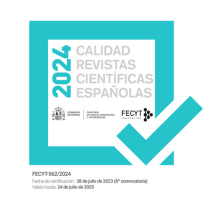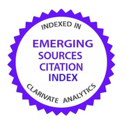Machine learning and predictive modeling for automobile insurance pricing
DOI:
https://doi.org/10.26360/2018_6Keywords:
data science, artificial intelligence, nonlife insurance, premiums, claimsAbstract
Historical records of insured policy holders constitute an ideal environment for the development of machine learning algorithms. These procedures are implemented on databases in order to extract knowledge. Here we explore different approaches to the prediction of claims and premiums in the automotive industry, comparing their implementation in a real sample, randomly divided into training and testing. We propose measures to help in the evaluation of the methods and their practical implication for the prediction of rare events and premium calculation. The main conclusion is that the dispersion of prices, and specifically the difference between the maximum pure and minimum premium, can become very different according to the predictive method used.
Downloads
References
Alpaydin, E. (2009). Introduction to machine learning. MIT press.
Ayuso, M., Guillen, M. y A. M. Pérez-Marín (2016a). Using GPS data to analyse the distance travelled to the first accident at fault in pay-as-you-drive insurance. Transportation Research Part C: Emerging Technologies 68, 160-167.
Ayuso, M., Guillen, M. y A. M. Pérez-Marín (2016b). Telematics and gender discrimination: some usage-based evidence on whether men’s risk of accidents differs from women’s. Risks 4(2), 1-10.
Boucher, J-P., Côté, S. y M. Guillen (2017). Exposure as duration and distance in telematics motor insurance using generalized additive models, Risks 5(4), 54; https://doi.org/10.3390/risks5040054.
Frees, E. W. (2009). Regression modeling with actuarial and financial applications. Cambridge University Press.
Guelman, L., Guillen, M. y A. M. Pérez-Marín (2014). A survey of personalized treatment models for pricing strategies in insurance. Insurance: Mathematics and Economics 58, 68-76.
Guillen, M. (2016). Big data en seguros. Indice: revista de estadística y sociedad, 28-30.
Guillen, M., Nielsen, J.P., Ayuso, M. y A. M. Pérez-Marin (2018). The use of telematics devices to improve automobile insurance rates, Risk Analysis, accepted, in press.
Kotsiantis, S. B. (2007). Supervised machine learning: A review of classification techniques. Informatica 31, 3-24.
Kuhn, M. Y K. Johnson (2013). Applied predictive modelin, vol. 26. Springer, New York.
Michalski, R. S., Carbonnel, J. G. y T. M. Mitchell (2013). Machine learning: an artificial intelligence approach. En R. Milchalski, J. Carbonnel, y T. Mitchell (eds.) Machine learning: An artificial intelligence approach, Springer Science & Business Media.
Padilla-Bareto, A., Guillen, M. y C. Bolancé (2017). Big-data Analytics en seguros. Anales del Instituto de Actuarios Españoles, 23, 1-19.
Sutton, R. S. y A. G. Barto (1998). Introduction to reinforcement learning. MIT press, Cambridge.
Turing A.M. (2009) Computing Machinery and Intelligence. En Epstein R., Roberts G. y G. Beber (eds) Parsing the Turing Test. Springer, 23-65.
Weinberger, K. Q., Blitzer, J. y L. K. Saul (2006). Distance metric learning for large margin nearest neighbor classification. Advances in neural information processing systems, 1473-1480.
Witten, I. H., Frank, E., Hall, M. A. y C. J. Pal (2016). Data Mining: Practical machine learning tools and techniques, Morgan Kaufmann.
Downloads
Published
How to Cite
Issue
Section
License
Copyright (c) 2023 Montserrat Guillen, Jessica Pesantez-Narvaez

This work is licensed under a Creative Commons Attribution-NonCommercial-NoDerivatives 4.0 International License.


















